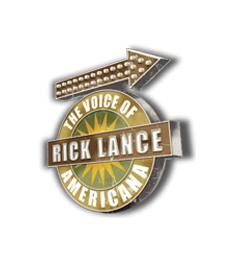In the evolving landscape of narration in documentary, two powerful tones are shaping the way stories are told: narrative authority and narrative intimacy. Whether you’re a producer shaping the vision, or a seasoned voice talent aligning your tone to the storytelling mode—understanding this contrast is not optional. It’s essential.
But how do these approaches differ? And more importantly, which one connects better with today’s audience?
What Does the Industry Demand Today?
The classic authoritative style—think Morgan Freeman or Peter Coyote—still holds weight, especially in historical or investigative projects. It delivers credibility. But over the past five years, there’s been a clear rise in demand for intimate, first-person narration, particularly in streaming platforms and branded content.
Stat to Know: 67% of documentary producers in 2023 leaned toward voiceovers that “felt human, not performative.”
(Source: Voiceover Survey Report 2023, Voice123)
Why this shift? Simple. Audiences today are connection-driven. They seek relatability over rigidity, especially in performative or observational docs.
Narrative Authority vs. Narrative Intimacy – A Quick Breakdown
| Feature | Narrative Authority | Narrative Intimacy |
| Tone | Commanding, objective | Conversational, reflective |
| POV | Third-person, omniscient | First-person or personal POV |
| Common Use | Historical docs, educational pieces | Human-interest, performative content |
| Emotional Range | Restrained, informative | Vulnerable, expressive |
| Famous Examples | Ken Burns documentaries | Cinéma vérité, performative documentaries |
Are You Aligning Your Voice Over Style to the Genre?
Here’s where it gets real: If you’re a voiceover artist or director still locked into one tone, you’re likely missing out on current opportunities.
Ask yourself:
- Is your voice carrying the weight of history or the vulnerability of experience?
- Are you projecting facts, or are you inviting the viewer into a lived reality?
This is not just artistic—it’s strategic. Your documentary voice over tone influences viewer trust, engagement, and retention.
Which tone are you using more often in your recent projects—authoritative or intimate?
Comment below or DM us—let’s compare notes!
Why the Shift to Intimacy Isn’t Just a Trend
Let’s look at cinéma vérité and observational documentaries—genres built on showing rather than telling. They thrive on narrative intimacy. The voice here isn’t a God-like narrator. It’s a guide, a participant, sometimes even an unreliable narrator. The vulnerability is the hook.
Rick Lance—one of the most reliable names in the industry—makes it a point to match all the tone and stylistic standards expected of high-end narration voice over services. Whether the project demands gravitas or gentle introspection, he aligns his delivery with the story’s emotional spine.
That’s the level of adaptability that today’s producers expect.
But Where Does Authority Still Shine?
In historical recounts or investigative pieces, the viewer often needs a sense of structure and clarity. That’s where narrative authority becomes critical. It sets context, commands respect, and clarifies timelines.
Think the Ken Burns effect—the slow zooms over archival photos, the steady narration walking you through war, history, or socio-political change.
Narration in documentary still requires this voice. But the key is knowing when.
Planning a historical or performative doc?
Book a strategy call to find the right documentary voice over tone for your narrative structure.
How Should You Decide Which Tone to Use?
Consider these three questions:
- What emotional outcome do you want your viewer to have?
- Is the story observational or interpretive?
- Are you anchoring the narrative or immersing the audience?
When you know the answers, the tone becomes clear.
As a producer, VO director, or talent, you’re not just reading lines—you’re sculpting perspective.
Final Thoughts: Tone Isn’t Just a Style—It’s a Strategy
The line between narrative authority and narrative intimacy is not rigid. Many successful documentaries today weave both—anchoring with authority and connecting through intimacy. The goal isn’t to pick one and abandon the other. It’s to choose the right tone for the moment.
Voice over is not filler. It’s the emotional architecture of your story.
The next time you get a brief for a documentary, ask:
Are we informing—or are we connecting?
And choose your tone accordingly.
Looking for expert narration that moves with your story’s rhythm?
Let’s talk tone, context, and connection.

